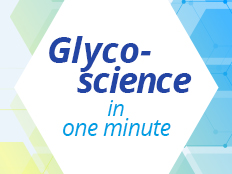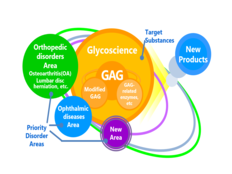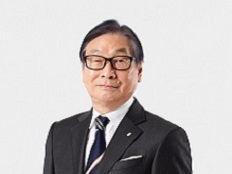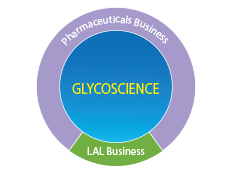One aspect of diversity management at Seikagaku is implementation of measures to develop an environment, systems, programs, and mechanisms to enable all employees to fully demonstrate their capabilities and support their contributions and successes. We launched a diversity and inclusion project in March 2020 to strengthen this effort. To ensure that the contributions and successes of diverse employees are the driver of Seikagaku’s sustainable growth, we have set concrete targets for each business site and are proceeding with reforms to create an organization in which individuals can demonstrate their full potential. The status of efforts to secure diversity at Seikagaku and our diversity-related targets are as follows.
- Women
Proportion of women in management positions as of March 31, 2025: 17.2% (target: 25.0% or higher as of March 31, 2026)
Proportion of female recruits as of March 31, 2025: 23.4% (annual recruitment target: comparable to 50.0%)
Gender pay gap (ratio of women's wages to men's wages):70.2%(71.7%)
*82.3% (84.5%) of employees are full-time, and 59.2% (60.4%) are contract employees. (The figures in parentheses exclude those on leave or on sabbatical.)
Seikagaku is engaging in activities to improve internal systems on the basis of the results of a project to promote women’s advancement in the workplace, launched with the objectives of developing an working environment that enables women to contribute and succeed and raising internal awareness.
- Foreign nationals
Proportion of foreign nationals employed in Japan as of March 31, 2025: 0.3% (annual recruitment target: several people)
Seikagaku does not classify people by nationality in hiring and promotion. The CEOs at our two main overseas subsidiaries (Associates of Cape Cod, Inc. and Dalton Chemical Laboratories, Inc.) were hired in the countries in which the companies are located, and all employees at the subsidiaries, including key personnel, are non-Japanese nationals. Seikagaku engages in Group management focused on corporate value enhancement, without regard to the nationality of officers and employees. Non-Japanese nationals account for 39.9% of all Seikagaku Group employees (as of March 31, 2025).
- Mid-career recruits
Proportion of mid-career recruits as of March 31, 2025: 85.6% (annual recruitment target: 50.0% or higher)
About half of Seikagaku’s management personnel are mid-career recruits, and we seek to create an organization that maximizes value by actively hiring and promoting employees with various work backgrounds as key personnel and effectively utilizing diverse values.
- Persons with disabilities
Proportion of persons with disabilities employed as of March 31, 2025: 1.8% (target: 2.5% or higher at the end of each year)
Seikagaku endorses the philosophy of realizing an inclusive society in which people have opportunities to participate in society through work.
- Senior employees
Employees 55 years of age and older, whom Seikagaku classifies as seniors, are mainly responsible for guidance and training of younger employees, project implementation, and work assigned by the directors in charge of their divisions. In October 2021, Seikagaku established a side work system and a separate consultation system for senior employees and is working to realize diverse work styles.
In the diversity and inclusion project, Seikagaku engages in activities based on the theme “Productivity improvement through work-life balance and diverse work styles” as an initiative to realize the core values expressed in the motto “Creativity, Fairness, Dreams and Passion” and to enhance corporate value. Specifically, we implement measures to instill within the company through training a sense of the importance of diversity and inclusion and of dealing with unconscious bias, hold discussion meetings for young employees to gather their opinions, and provide new forums for communication. Also, to create an organization in which people compliment one another, we have also introduced what we call “thanks cards” for use in jotting down a quick thank-you note by employees who feel gratitude to colleagues for their help or support at work.
To help employees achieve a good work-life balance, Seikagaku has introduced flextime at all business sites, including the laboratories and plants, and designated one day a week as a no overtime day. We have also instituted a reduced working hours system for employees who provide childcare and nursing care and a system that enables employees to accumulate lapsed annual paid leave for use during prolonged illnesses or to cope with extended childcare and nursing care needs. Seikagaku encourages employees to develop their own work styles to help them balance their personal lives with their work.
In March 31, 2021, we instituted a work-from-home system as an option for diversifying work styles. Other objectives for introducing this system were to increase productivity though greater operational efficiency and create a means of maintaining continuity of operations in the event of a disaster.
Employees used an average of 80.6% of their paid leave in the fiscal year ended March 31, 2025 (fiscal 2024). In the period from fiscal 2021 to fiscal 2024, 100% of staff who left work for childcare reasons returned to work. The number of male employees taking childcare leave has also increased in recent years. Furthermore, Seikagaku creates employee-friendly workplaces through staff assignments corresponding to the nature and amount of work, improvement of the workplace environment, and correction of long working hours.
Since 2009, Seikagaku has implemented measures aimed at maintaining the physical and mental health of employees and, in so doing, vitalizing workplaces and increasing productivity. Specifically, we are improving the overall workplace environment by obtaining the advice and assistance of industrial physicians and public health nurses periodically and as needed, by conducting line care seminars for managers that utilize the results of annual stress checks, and other means. We have also instituted an external hotline and counseling service that employees and family members can freely utilize and are developing a self-care support system to enable employees themselves to recognize physical disorders and stress and learn how to cope with them.













